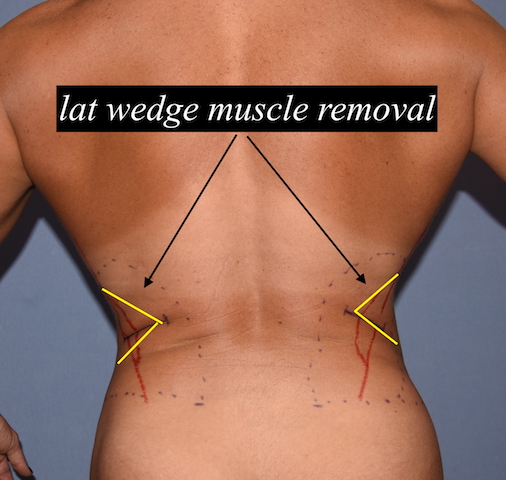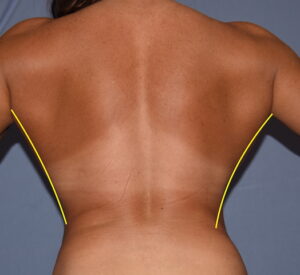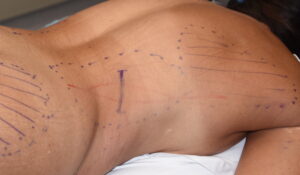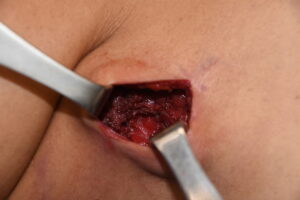Background: Waist reduction can be done by a variety of surgical techniques. Standard and well used techniques include liposuction, lateral fascial plication during a tummy tuck as well as non-surgical methods of weight loss and exercise. For the vast majority of patients the waist reduction obtained by these type of standard approach is aesthetically sufficient.
For the extremely motivated patient who seeks a maximal waist reduction result, the procedure of rib removal can be done. Such an aesthetic needs exists when standard surgical and non-surgical therapies fails to achieve their waist reduction goals. In this situation the lower ribs serve as the last anatomic barrier that can be surgically reduced.
Gaining access to the lower ribs requires surmounting the latissimus dorsi muscle. This is the largest muscle on the torso that runs from is origin at the lower spine, iliac crest and lower ribs up to its insertion on the upper arm bone. While one would think that retracting the muscle medially from its lateral border would be successful for lower rib access, it is not. The muscle is far too thick and wide to permit adequate retraction…or at least very difficult to do sustained retraction through such a small skin incision even with a willing assistant. As a result It becomes necessary to split the outer border of the muscle to perform lower rib removals.
In looking at the areas needed for waist reduction and the outer border of the latissimus dorsi muscle, it becomes apparent that the muscle itself also has an influence on the width of the waist. This becomes most apparent when working on a body builder who would have much larger lats than more common non-body builder patients.
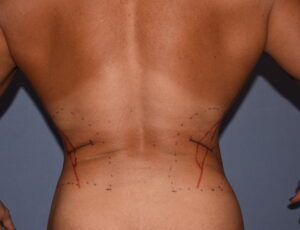
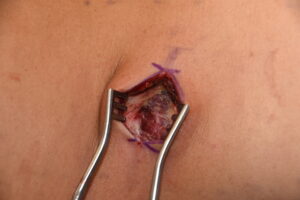
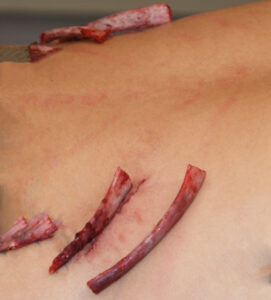
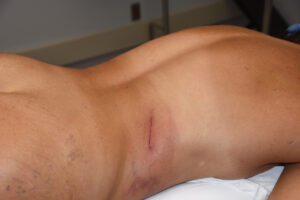
While there are anatomic benefits to removal of the outer ends of the the lower ribs for waist reduction, one should not rely on those effects alone. The width and thickness of the lat muscle also has a significant influence particularly in patients predisposed to larger muscle masses. (female body builders, male to female transgender patients) Some muscle resection should be considered to further improve the waist reduction effect. Such localized muscle reduction has not adverse effects on muscle function afterwards as the zone of resection compared to the overall size of the muscle is relatively small.
Case Highlights:
1) In waist reduction by rib removal the latissimus dorsi muscle plays a crucial role both in access as well as waistline reshaping.
2) The thick latissimus dorsi muscle must be split one its lateral border to provide access go the underlying ribs.
3) The split outer border of the latissimus dorsi muscles has wedges of muscle removed on its upper and lower edges during closure to create an overall soft tissue wedge indentation of the waist which complements that of the effects of the rib removal.
Dr. Barry Eppley
Indianapolis, Indiana

